The gate valve is the most common shut-off valve. Unlike ball valves, they are not quarter-turn devices; instead, they close and open through revolutions of the hand wheel.
Used in wastewater plants, power plants and process systems, the threaded system of the gate valves give them an advantage over the quarter turn system of the ball and butterfly valve in large applications.
Fluid through gate valves experiences only minimal pressure drop as gate valves allow total flow through its passage when fully open.
This post discusses the functions, symbols, advantages and disadvantages, types, and other essential things you need to know about the gate valve.
What is A Gate Valve?
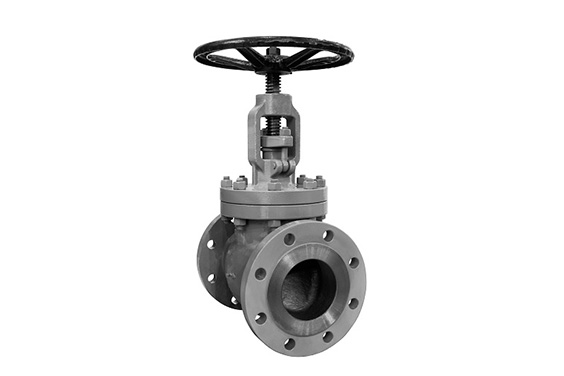
Gate valves can also be called sluice valves or knife valves. They are control valves that allow or restrict the flow of media completely. Gate valves use a flat gate to close off flow between pipe flanges.
A gate valve, being a full port valve, has an equal diameter to the pipe through which the fluid passes. Hence, unlike butterfly valves, gate valves minimise pressure losses in the fluid when fully open. Also, because of the equal pipe and valve diameters, gate valves allow for the movement of pigs within the pipe for cleaning and inspection operations.
While butterfly valves can be used in flow regulation and on-off services, gate valves should only be used in on-off services as blocking valves and also to allow fluid flow. They should not be used in throttling.
Because of their uncomplicated construction and capability to be used in different low-pressure applications, gate valves are one of the most common valves in the industry.
Gate Valve Symbol
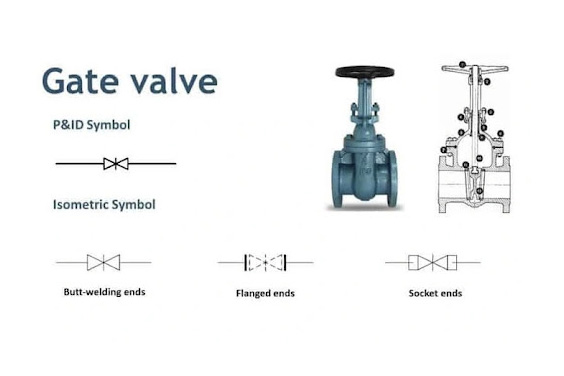
The gate valve symbol is composed of two triangles meeting at a point. A vertical line is inserted between the triangles, and solid horizontal lines extend from the opposite sides of the triangle.
The vertical line indicates the blocking operation of the gate valve, and the horizontal lines show that the valve has a two-way function in on-off applications.
The gate valve symbol used in piping and instrumentation diagrams (P&ID) is a modification of the valve symbol, which is the gate valve symbol without the vertical line between the triangles.
The three isometric symbols in the diagram indicate symbols for butt-welding end connections, flanged ends, and socket ends connections.
Types Of Gate Valves
Gate valves can be classified in three different ways:
Parallel Vs. Wedge-shaped Gate Valves
Gate valves are mostly differentiated into parallel and wedge-shaped valves. The parallel gate valves shut off flow using a flat gate between two parallel seats. The gate is shut when the pressure from the pipe is allowed to seal the disc to prevent any flow. These gate valves usually function in conditions with minimal pressures or pressure drops.
- Knife gate valves are a common type of parallel gate valve. They use a sharply pointed gate to shut out fluids with suspended solids or slurries. The disc of a knife valve is wiped as it passes through the seat rings.
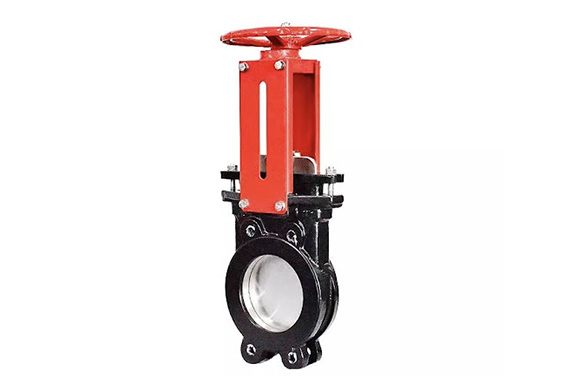
- Slab gate valves are also known as through-conduit valves. They are closing valves that include a bore in their construction. The slab gate is aligned to prevent turbulence in flow when it is fully open. The low turbulence results in a small pressure drop and makes the slab gate perfect for transmitting crude oil.
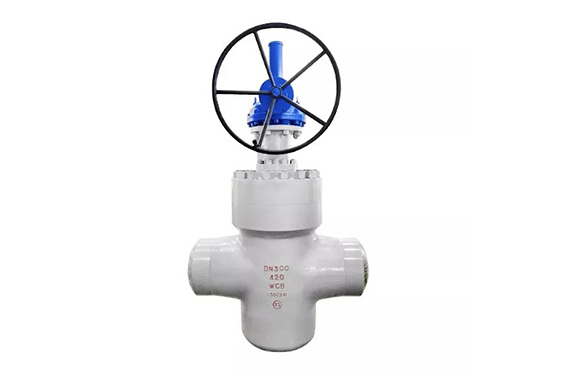
- Wedge-shaped gate valves shut off fluid using a gate shaped like a wedge. The wedge gate rests on two seats inclined in opposite directions. In this valve, the seals are tightened by extra pressure from the wedge seats. The gates last longer due to reduced contact with the seats.
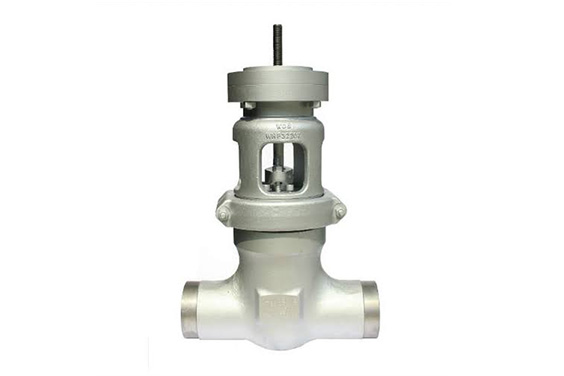
- The split wedge gate design seals effectively due to its malleability. Also, In cases where the inclined seats are not aligned properly, leading to more contact with the seats, the split wedge does not jam due to its malleability. This gate valve design functions effectively with abrasive fluids.

- Solid wedge gate valves are a type of gate valve with a solid structure and construction. They are very common valves because they can be used in various pipe positions.
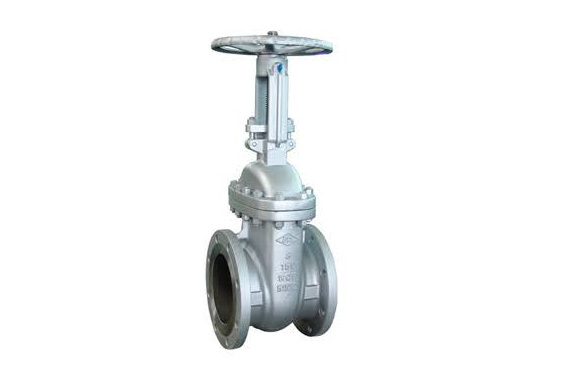
- Flexible wedge gate valves are available in different forms. Each of these forms offers specific advantages. For example, the narrow flexible wedge gate has a strong structure but is not very malleable, unlike the wider gate, which is more flexible. They are usually found in steam systems.
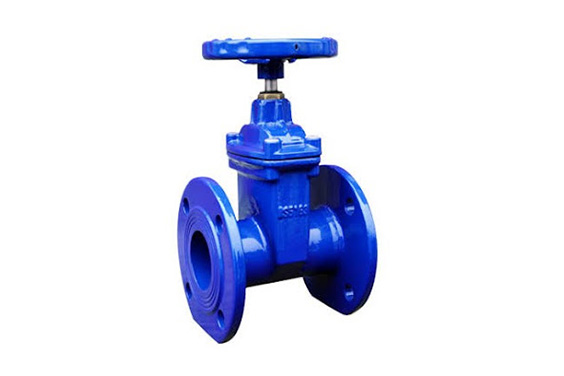
Metal Seated Vs. Resilient Seated Gate Valves
The gate in the metal seated gate valve is shaped like a cone and enters into a hole in the bottom of the valve when it closes, supported by inclined seats. Impurities are a constant feature of the metal seated valve because of its closure design, leading to wearing out of the gate.
The metal seated gate valve was used before producing resilient seated gate valves.
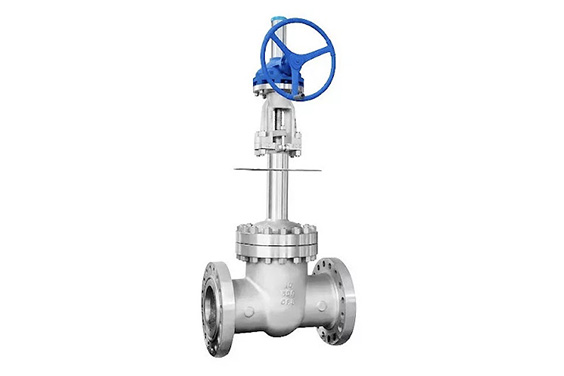
Resilient seated gate valves, because of the valve’s flat base, allow impurities to pass through without being stored in a hole as in the metal seated gate valve.
The rubber element in the gate sucks in the impurities as it closes, and the impurities are cleaned off when it opens again, allowing the gate to return to its normal form.
Rising Vs. Non-Rising Stem Designed Gate Valves
Rising stem-designed gate valves have stems outside the valve body and move with the gate. As the gate moves upward, so does the stem and vice versa. This movement allows the stem to be monitored for maintenance. This design is best used for surface installations.
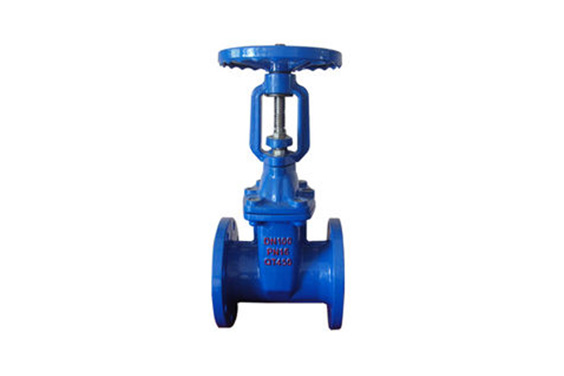
In non-rising stem designs, the stem rotates with the gate movement from inside the valve body. An indicator on top of the stem shows the position of the valve. This design can be used in industrial gate valves for surface and underground installations.
Other Gate Valve Types
Parallel Expanding Gate Valve
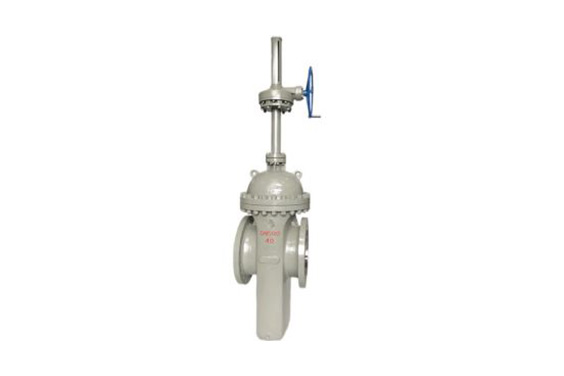
These valves seal by the combination of two slab gate valves. The mechanically expanding gates are sealed effectively at the gate seats. They find application mostly in electric systems and petroleum industries.
Gate Valve Advantages And Disadvantages
When used as a control valve, the gate valve can effectively function in several industrial operations. Like other industrial control valves, the gate valve has advantages and disadvantages. Some of its advantages are:
Advantages
Minimal Flow Resistance
The gate valve is a full port valve. Hence it allows easy passage of fluid with minimal resistance. Unlike other valves, when fully open, the gate valve body does not affect the flow motion or direction.
Better Sealing Operation
Gate valves perform better sealing operations than the shutoff valve, which is also a control valve. Even though slower than some other valves, the gate valve offers faster opening and closing operations than the shutoff valve.
Gate Valves Have Various Applications
Gate valves can function effectively with fluids such as oil, steam, slurries, and suspended fluids. Also, they can function as low vacuum system valves or venting valves.
Bidirectional Flow
Gate valves are not restricted to one direction of flow. They are two-way directional valves, and they do not depend on the direction of the medium. Gate valves are good for operations where the fluid direction may switch.
Other advantages of the gate valves include:
- Due to the slow opening and closing operations of the gate valves, a water hammer is prevented when the valve is shut.
- In gate valves, impurities are usually washed away by the flowing media.
- Gate valves operate in higher pressure conditions than the butterfly valve.
- They work effectively with high viscosity fluids.
- For industrial valve manufacturers, the gate valve offers a simple and easy construction. Also, they are easy to install and replace.
- Small torque is required in opening and closing the gate.
Disadvantages
Gate Valves Operate Slowly
Gate valves can be severely damaged if they are open or closed halfway. Hence the gate has to be withdrawn fully into the upper valve area when open and must be allowed to rest on the valve seat when closed before fluid flow.
The movement from the upper valve area to the bottom takes a lot of time, leading to the slow operation of gate valves. Due to its slow operation, gate valves can not be used for fast processes.
Damage From Frequent Seat Contact
The valve gate makes contact frequently with the valve seat; this may lead to scrapings on the gate surface. Surface scrapings cause damage to the gate with time resulting in the shorter life span of gate valves. Damages on the gate surface are not easily repaired.
Other disadvantages of gate valves include:
- They are larger and therefore require more space than butterfly valves.
Gate Valve Functions
Gate valves are usually used in on/off services where they function in allowing or restricting flow. For better efficiency, gate valves should not be used regularly, as frequent friction would lead to the shorter service life of the valve.
Because of its ability to allow flow through the pipeline with minimal pressure losses and permit easy operation of pigs for inspection and cleaning, the gate valve is a commonly used valve for blocking and isolation.
However, gate valves should not be used for flow regulation. Constant fluid contact with the gate causes damage to the disc and seat and invariably shortens the valve’s service life.
They have a wide application in the industry which includes operations in petroleum refineries, power plants, manufacturing factories, and chemical production companies. The gate valves function effectively in high temperature and pressure conditions.
Gate Valve Parts
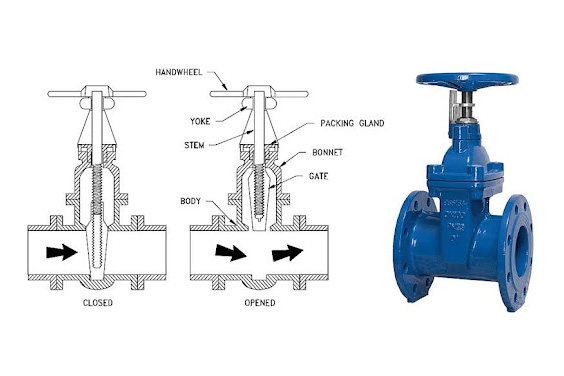
The gate valve includes the body, hand wheel, yoke, bonnet, packing gland, stew, and gate. Each part will be explained below.
Gate Valve Body
The valve body is responsible for housing the valve trim and allowing fluid to pass from one pipe end to another. Valve bodies are made from metals, an alloy of metals, or nonmetals of varying kinds.
Also called shells, the gate valve body can be joined to the pipe flanges by butt, sockets, wafers, or threaded ends.
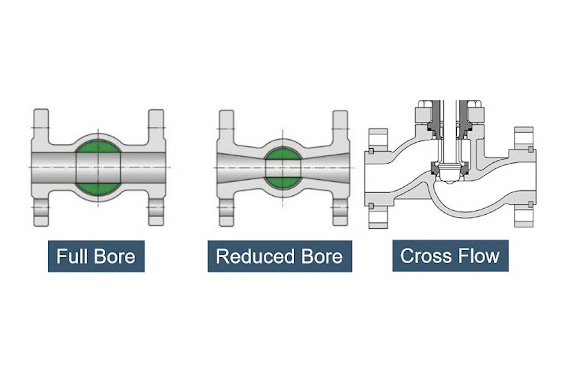
The gate valve body is of three different designs, which depend on the purpose of the gate valve. The designs are Reduced Bore, Full Bore, and Cross Flow.
Gate Valve Bonnet
The bonnet of gate valves primarily functions as valve covers and support for other parts of the valve, such as the disc, stem, and actuators. Also, in the gate valve, the bonnet allows an opening for the stem.
The gate valve bonnet is joined to the body using threads, bolts, or welding. Some valve bonnets are designed to be merged with the body (bonnetless valves), and bonnets are usually made in the same material as the valve body.
Gate Valve Trim
The gate valve trim comprises the valve disc, gland sleeve, gland packings, back seat, valve stem, and valve seat. These are parts that have contact with the flow medium. The valve trim parts control the operation of the valve.
Valve Stem
The stem is responsible for the control of the disc. When the stem is rotated, it relays this motion to the disc by lifting or dropping it. The gate valve stem is joined to the actuator (sometimes through the yoke) or manual handling machine on the top end and the valve disc on the other end to facilitate control.
Valve Seat
The gate valve seat is a resting point for the valve disc to which it is sealed. While some valves have one seat, the gate valve has two seats, one on each end of the pipe flanges. If the disc and valve seat are not sealed properly, it may cause leakages in the valve.
Valve Backseat
The gate valve backseat holds the stem in the valve open position. It also restricts fluid from going up to the packing chamber and the surface.
Valve Disc
The gate valve disc is the part of the valve which performs the function of allowing or restricting flow through the pipeline. It blocks the fluid pressure from moving from one end to another. The disc rests on the valve seat to which it is sealed.
Gland Packings, Sleeve and Yoke
The gland packings prevent leakages from the stem and are usually in a stuffing box. The gland sleeves keep the gland packings in the box.
The yoke connects the actuator to the stem. They are sometimes merged with the bonnet to manufacture several valve designs. The yoke is also called arms.
How Does The Gate Valve Work?
The gate valve operation is in many ways similar to the operation of most valves. The hand wheel or actuator is controlled to rotate the stem, which controls the gate. For the handwheel, the wheel is turned in several revolutions before the gate valve can be fully open from a closed position or fully closed from an open position.
Control using the actuator is easier as it requires no user at the location, only an actuator system (pneumatic or electric) must be on site. By raising the gate to a fully open position, the valve allows the media to flow through the pipeline without obstruction.
Closing and sealing the pipe to the valve seat retains the flow pressure and restricts the flow of the media beyond the gate. The flow rate of the media experiences erratic change as the gate valve is closed, resulting in an unpredictable relationship between the valve and fluid flow rate.
Fluid pressure and flow against the gate wear out the seat and gate. Gate valves should not be used for flow regulation as the constant flow hastens the damage to the gate and seat.
Installation And Maintenance of Gate Valves
Installation of Gate Valves
Installing gate valves should be done properly to increase the service life of the gate valves and to ensure their proper operation. Here are some installation practices to be followed while installing gate valves:
- Installation of the gate valve, the flange must be at room temperature.
- While valves can be installed in any form, flat or upright, it is advisable to install them in an upright form for easy hand-wheel access.
- Ensure that during installation, the pipe flanges are spaced so that there is enough space for the valve to be inserted or removed during servicing.
- Welding jobs should be completed before the installation of the gate valve.
- Sludges and waste residues in the pipeline must be washed away before the valves are installed.
- The flange and valve should be properly aligned, and the pipe handling of the weight of the valve should be checked.
- The materials of the gate valve parts should be checked to ensure no damage was done during transportation or storage.
- The bolts connecting the valve to the pipes should be tightened properly, and the pressure should be equally distributed.
- The parts of the pipe flanges to contact the valves should be clean and free of residue.
- The gate valve should be tested after bolting to ensure the valve is stable in its position.
Maintenance
Below are some essential practices to ensure the valve works effectively and lasts longer.
- The pressure in the pipes should be released before maintenance of the gate valves commence.
- The pressure in the pipes or valves should be released before commencing maintenance.
- The gate valve disc should be replaced from the top by removing the bonnet and the stem before the disc is replaced.
- The valve should be cycled regularly when not in use.
- The process of removing the valve should occur in reverse of the installation.
What To Consider Before Buying A Gate Valve
In selecting a gate valve suitable for operation in specific conditions, factors such as suitable material, size and design must be considered. Here are some factors to consider in buying a gate valve:
Materials
Materials used for the production of gate valves vary with specific conditions. Common materials are cast iron, cast carbon steel, stainless steel, ductile iron, gun metal, bronze, steel alloys, stainless steel, and forged steel.
Key selection criteria of material to use are fluid service and design temperature. Below are some materials used in the creation of the gate valve:
Valve Body
- Cast Carbon Steel to ASTM A216 Gr. WCB.
- Stainless Steel to ASTM A351 Gr. CF8/8M/3/3M
- ASTM A351 Gr. CN 7M
Gaskets
- Compressed Asbestos fibre Flat Ring
- Graphite Asbestos Flat Ring
- SS 304/316/304L/316L Spiral wound with PTFE/CAF/Grafoil Filler.
Trims / Internal Working Parts
Material Grades
Below are some common trim material grades used in the production of gate valves
- AISI 410 (SS 410 – 13% Cr. Steel)
- AISI 304
- AISI 316
- AISI 304L
- AISI 316L
- Hast Alloy B/C
- ASTM A351 Gr, CN 7M
- With stellite hard face seat and wedge face
Trim materials are grouped and assigned a trim number or combination number. In the chart below, material for a gate valve seat, disc, stem and backseat are specified against a trim number.
From this chart, an order can be made by the trim number. There will be no need to specify any materials for an order of the gate valve trim. This chart is in line with the API 600 specification.
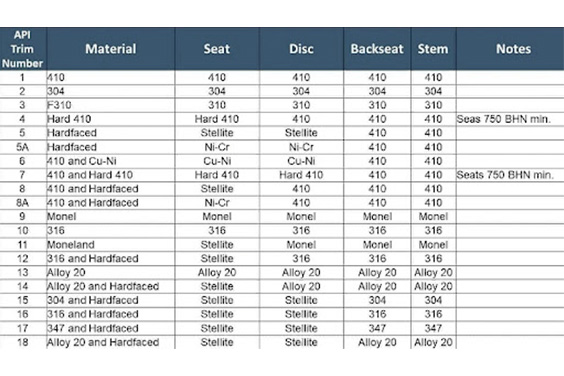
Gland Packing
- Graphite (Frafoil) moulded ring.
- Graphite Asbestos Rope.
- Inconel Braided Grafoil with corrosion inhibitor
Applicable Codes and Standards
Below are codes and standards that are used in the design and selection of gate valves:
Pressure Testing
API 598
Pressure Temperature Rating
API B16.34
Face to Face
ANSI B16.10
Socket Weld End
ANSI B16.25 and B16.11
Screwed End
ANSI B 1.20.1 (BSP/NPT)
Conclusion
This post discussed all you need to know about the gate valve, including its function, parts, installation and maintenance requirements, and what you need to consider before buying an industrial gate valve.
Dombor valve is an industrial valve manufacturer that provides high-quality valve solutions to fit market requirements. With our 20 years of manufacturing experience, we specialise in creating valve types that function in any environment. You can contact us today for the best professional gate valves.









